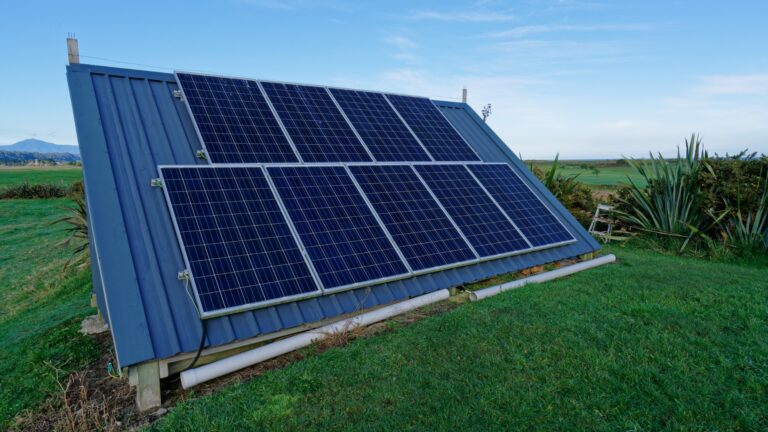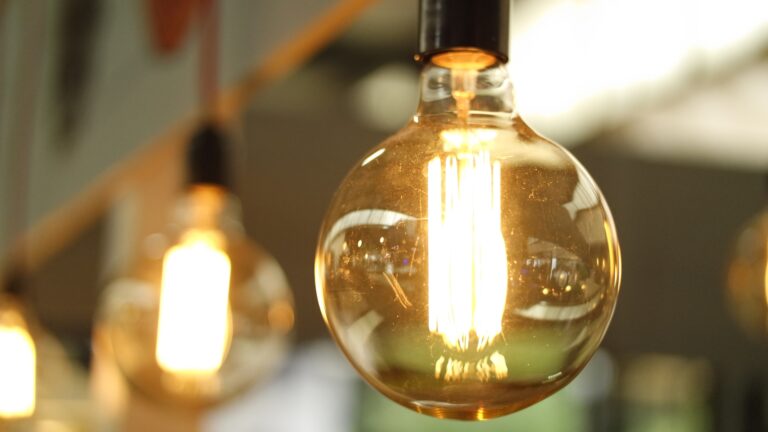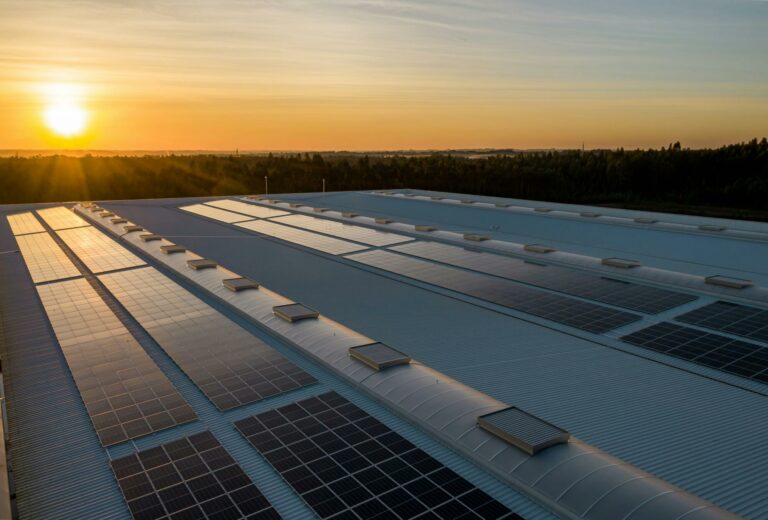A grid-tied solar system, also known as a grid-connected or grid-interactive solar system, is a type of solar power system connected to the electrical grid. This means that any excess energy the system produces is sent back to the grid. The system also draws power from the grid as needed.
The solar panels convert sunlight into direct current (DC) electricity. The inverter then converts the DC electricity into alternating current (AC) electricity, which is compatible with the electrical grid. The net meter measures the electricity going into and out of the grid. If the system has a battery, excess energy can be stored up.
But what are the advantages of a battery system like this and how long does it take to install? Solar panels in general can help lower energy costs, and those hooked up to a battery can provide even more benefits.
Advantages of a battery backup
A battery backup is not necessary for a grid-tied solar system to function. However, opting for this additional element provides several major benefits. A backup battery is often a cost-effective measure in the long run for commercial buildings. After installing a grid-tied solar system with a battery backup, you can expect to see the following advantages over a traditional system:
Power during outages
A battery backup system can provide power to the building during a power outage. This allows the use of essential appliances and systems such as lights, refrigerators, and medical equipment.
Energy independence
A battery backup system allows for a level of energy independence. It can store excess energy generated by the solar panels during the day for use during nighttime or when the grid is down.
Increased savings
A battery backup system can help to reduce or eliminate the need to purchase electricity from the utility company. This means increased savings on electric bills. Commercial industries typically see larger savings in this area.
Battery backup systems can also store energy during off-peak hours when the electricity is less expensive. This energy is then used during peak hours when electricity would be pricier.
Increased self-consumption
A battery backup system allows for increased self-consumption of the generated solar energy. This increases the overall efficiency and effectiveness of the system.
Grid services
A grid-tied solar system with battery backup can also be used to provide grid services, such as frequency regulation, voltage support, and peak shaving. These help to improve the overall stability and reliability of the electric grid.
How long does it take to install solar panels?
From initial assessment to finished product, you can expect solar panel installation to take anywhere from several weeks to several months. This will depend greatly on the size and scope of the project as well as the specifics of the approval process with local authorities. Weather conditions can also play a role.
The installation process has five general steps:
1. Site assessment and design:
An industry professional will visit your home to assess the site and design the system, which can take 1-2 weeks.
2. Permitting and approvals:
The process of getting the necessary permits and approvals from local authorities can also take several weeks, depending on the location.
3. Equipment procurement:
Once the permits are obtained, the company will procure equipment for the solar panel system. This can take several weeks depending on the availability of the equipment.
4. Installation:
The actual installation of the solar panels, including the mounting and wiring, can take 1-2 days for installation on a smaller building. More complex structures will need more time.
5. Inspection and commissioning:
Once the installation is complete, the local authorities will inspect and commission the system. This can take several days.
What is the cost of a grid-tied solar system?
The cost of a grid-tied solar system with battery backup will depend on a few factors. The size of the system is important. However, the type and efficiency of the solar panels and inverter used also play a role, as does location.
On average, a 5 kW grid-tied solar system can cost between $13,000 to $18,000 before any federal or state incentives. It can generate around 7,000 to 8,000 kilowatt-hours (kWh) of electricity per year.
The addition of a battery backup to the system may add between $5,000 and $10,000 to the overall system installation cost for a simple commercial space. The complexity and size of the installation will affect this cost difference. You should first consult with a professional installation team to see the exact breakdown of needs for your site.
What to look for in solar installation experts
A solar system is a big investment with the potential to reduce energy costs and lessen your carbon footprint. However, it is critical that contractors install these systems correctly from the beginning to avoid unnecessary costs and to make sure you see full benefits. Look for the following qualities in a solar panel contractor:
Experience
Look for a company with a proven track record of successful installations spanning multiple years. Consider also the combined experience of the contracting team and how long they have been working together.
Equipment quality
A solid installation team will have access to top-of-the-line, high quality equipment. The quality of this equipment will carry over to the quality of your installation. The company should provide warranties on installed equipment.
Financing options
Look for a company that offers flexible financing options and can help you navigate the process of obtaining government incentives and rebates.
Post-installation services
The right company keeps helping you even after the job is complete. Maintenance, troubleshooting and monitoring are all part of ensuring your solar system keeps working soundly for years to come.
Certification and Licensing
Like other contractors who work in construction and installation, solar installation contractors should be duly certified and licensed. In the solar industry, you should look for certification by the North American Board of Certified Energy Practitioners (NABCEP).
Customer service
Last but not least, you will want a company that is professional and responsive to your needs. You should receive clear and detailed information about the installation process, the cost breakdown, and ongoing support.
Solar System Solutions from Huston Solar
At Huston Solar, we can walk you through all the costs and variables of getting a high-quality commercial solar solution in central Indiana. We will even handle all the local jurisdiction permitting and interconnection agreements with utility companies. This means saving you time and hassle while ensuring your new grid-tied solar system is up to code and ready to go. Get in touch with us and request a quote today!



